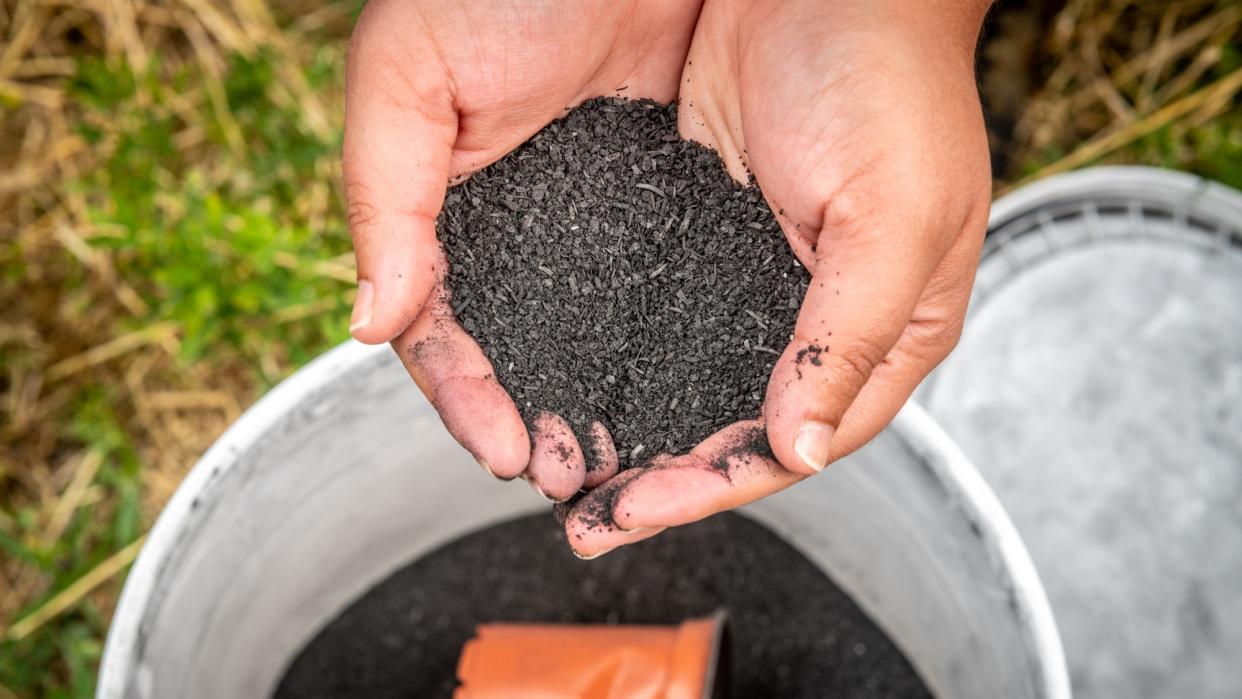What is biochar?

Microsoft has partnered with the corporation Carbon Streaming on a new project to bring the former closer to its carbon-negative goal. The company invested millions of dollars to receive up to 10,000 tons of carbon dioxide removal credits through the production of burnt organic material, or biochar, which offsets emissions the company itself produces. This method is a “vital piece of the puzzle for corporations with net zero commitments,” according to Oliver Forster, the vice president of sales at Carbon Streaming. So what exactly is biochar and how does it offset emissions, thereby mitigating climate change?
What is biochar?
Biochar is a “charcoal-like substance that’s made by burning organic material from agricultural and forestry wastes (also called biomass) in a controlled process called pyrolysis,” according to Regeneration International. The organic matter is “burned in a container with very little oxygen” and consequently releases “little to no contaminating fumes” into the atmosphere. Once burned, biochar can then be added to degraded soil, which it improves by helping it “retain water and nutrients,” per Forbes. The resulting effect can lead to potentially better crop yields and reduced fertilizer requirements.
In addition to improving soil quality, converting biomass to biochar can prevent emissions from reaching the atmosphere. Normally, decomposing organic matter emits “the potent greenhouse gases CO2 and methane.” But with pyrolysis, “the carbon is locked in a stable form that resists decay, sequestering it for hundreds of years,” Forbes explained.
How can it be used to fight climate change?
According to Our World in Data, agriculture, forestry and land use account for approximately 18% of global greenhouse gas emissions. “When farmers grow their crops, they apply fertilizer and/or manure and use different kinds of machinery to till the soil,” said Raj Shrestha, a research associate in horticulture and crop science at The Ohio State University. “In the process, greenhouse gases are produced and released into the atmosphere.”
Biochar could offset the equivalent of up to three gigatons of carbon dioxide each year by 2050, which is like shutting down 800 coal plants, Grist reported. “We can achieve negative emission in our agroecosystems by reducing the carbon source and enhancing carbon sink,” Shreshta explained, adding that biochar “contributes to both these aspects to create net negative agriculture.”
“If we can convince farmers that converting biomass to biochar is good for the long-term sustainability of soils, the economy, and good for the environment, then we’ll be able to see wide adoption of this technology,” Shreshta continued. Some companies, like Microsoft, have seen the potential and have opted to pay “biochar producers millions of dollars so that they can claim credit for the carbon that’s locked up in the soot and not in the atmosphere heating the Earth,” Grist wrote.
Are there any drawbacks?
Biochar alone is not enough to reduce carbon emissions from soil and must be combined with other methods like “commercial nitrogen fertilizer or organic materials like manure or compost,” Euronews noted. It is also expensive to produce and there is “limited evidence on its benefits and stability, due to a lack of large-scale, long-term studies.”
In order for biochar to become a legitimate climate solution, it would need to be produced “on a much larger scale,” per Grist. However, that brings up “a lot more complicated questions,” Charlotte Levy, a science adviser at carbon removal nonprofit Carbon180, told the outlet. There’s the possibility that companies could start growing plants specifically to create biochar, rather than using existing organic matter, which could actually worsen greenhouse gas emissions. And it’s not like biochar would make it so farmers could totally “supercharge” production, Grist added.
Moreover, “not all biochar is equal,” the outlet went on. “Biochar started to be promoted as a single solution and a silver bullet, and it’s much more nuanced than that,” Rachel Seman-Varner, a soil scientist at the American Farmland Trust, told Grist. “A lot of people are trying to shift toward understanding that biochar is a class of products.”

